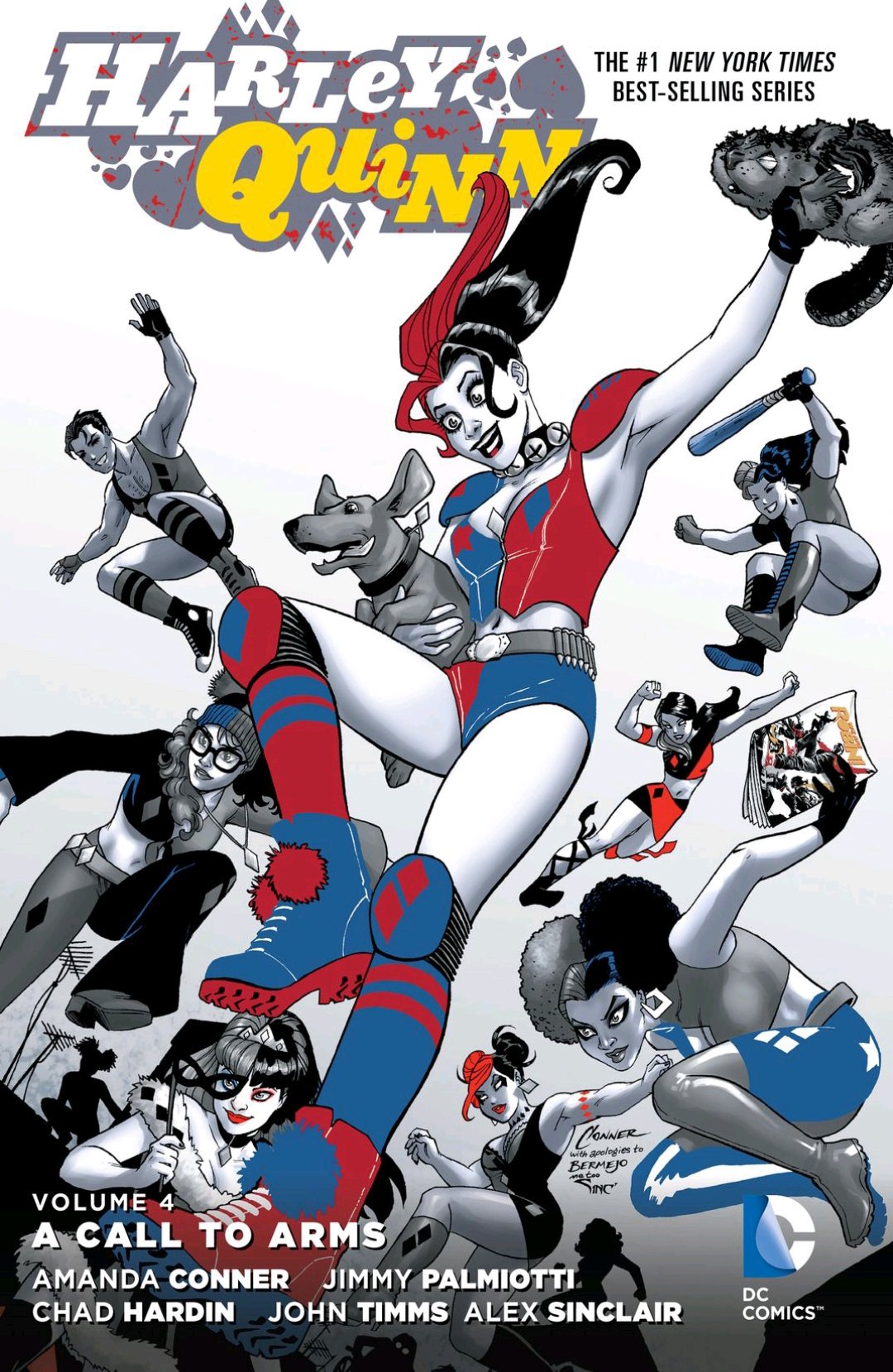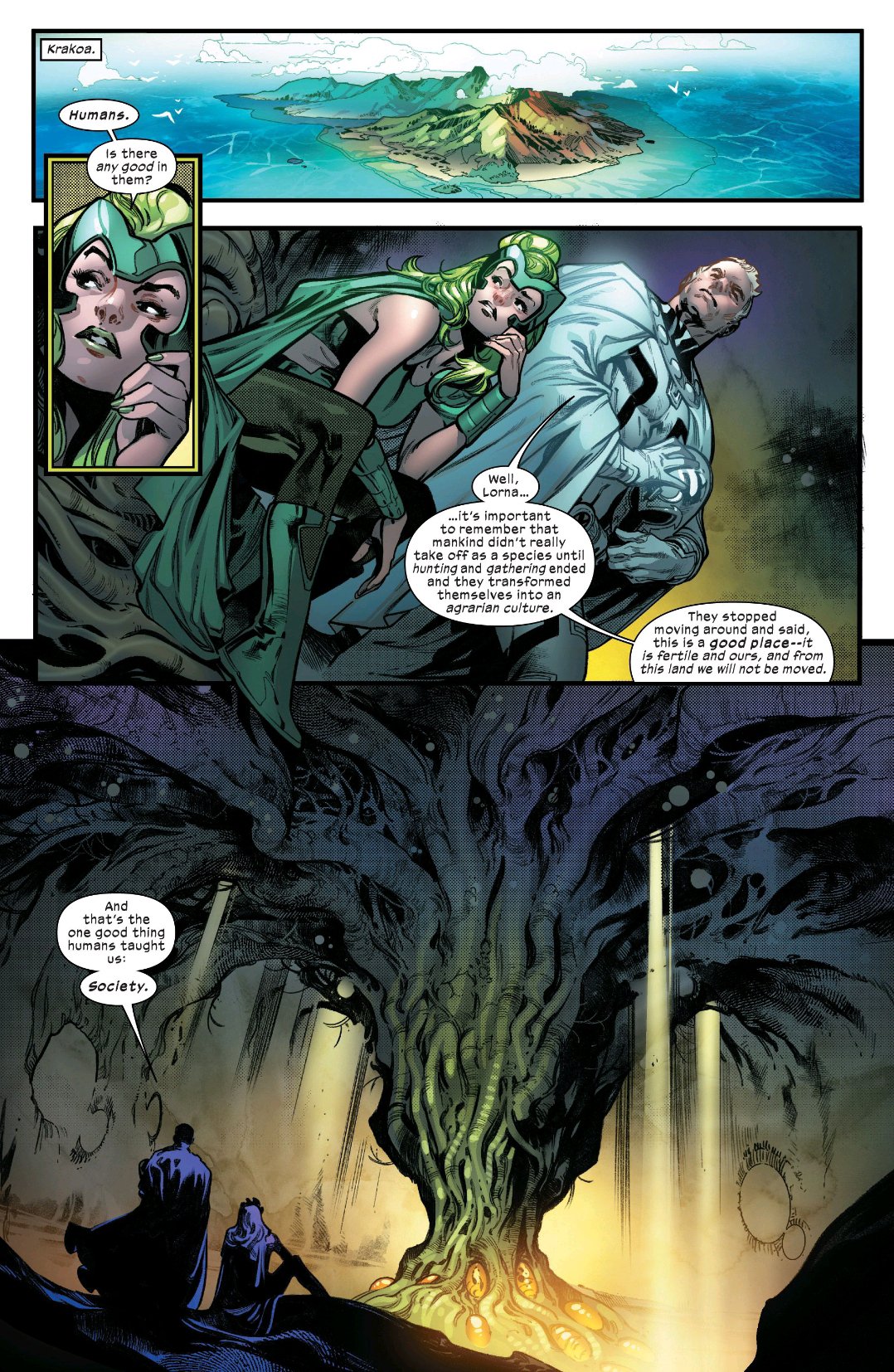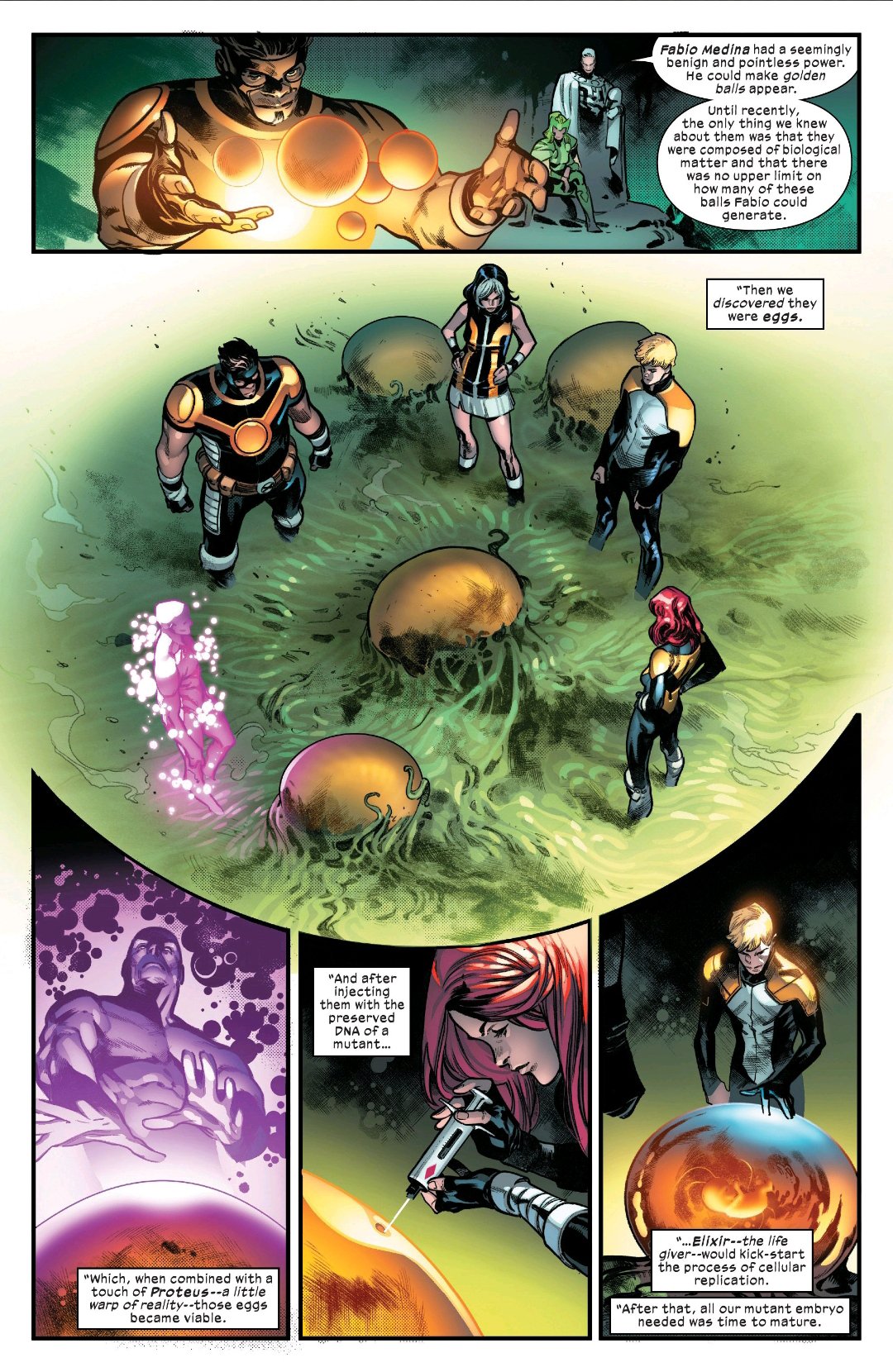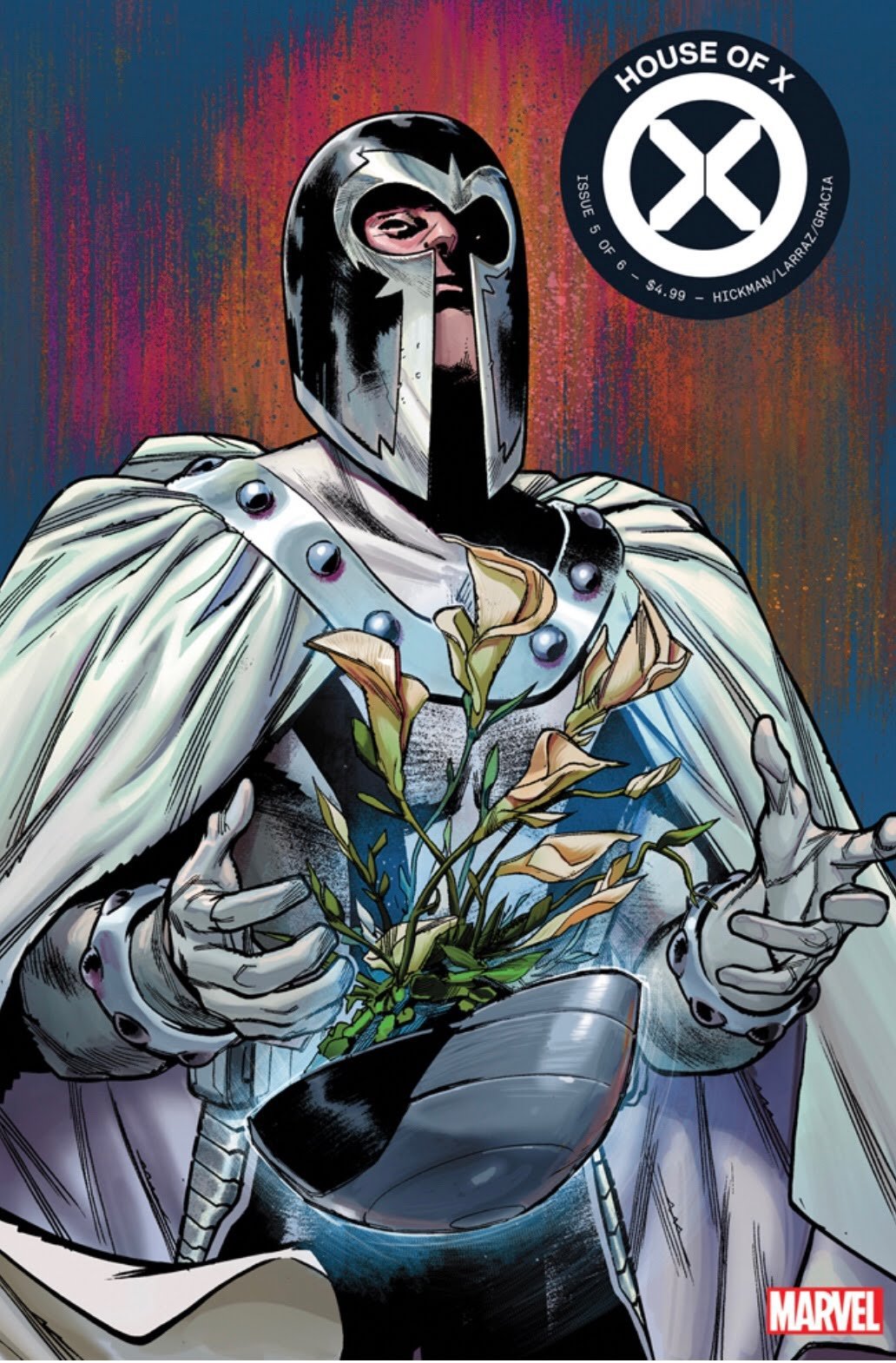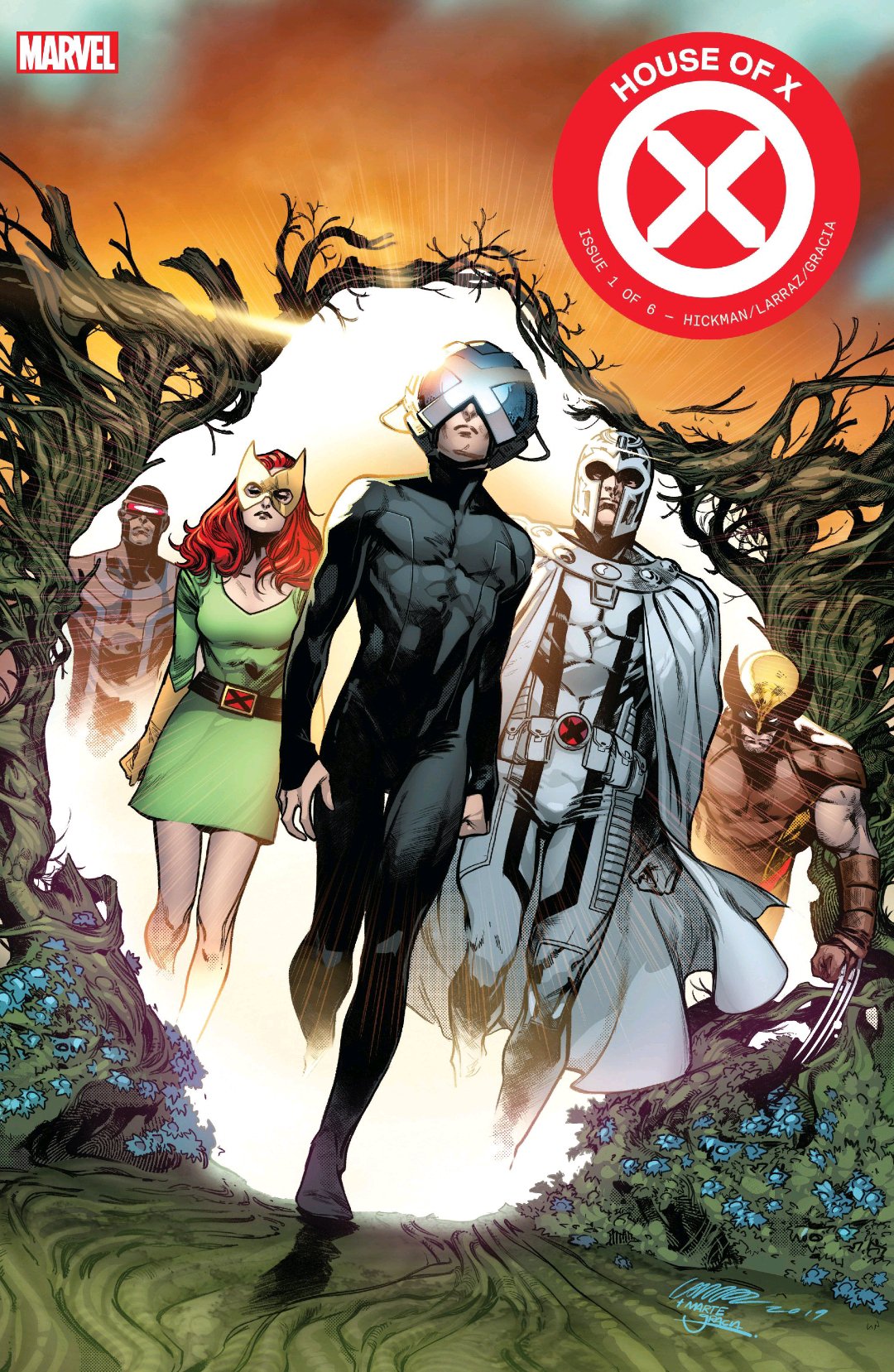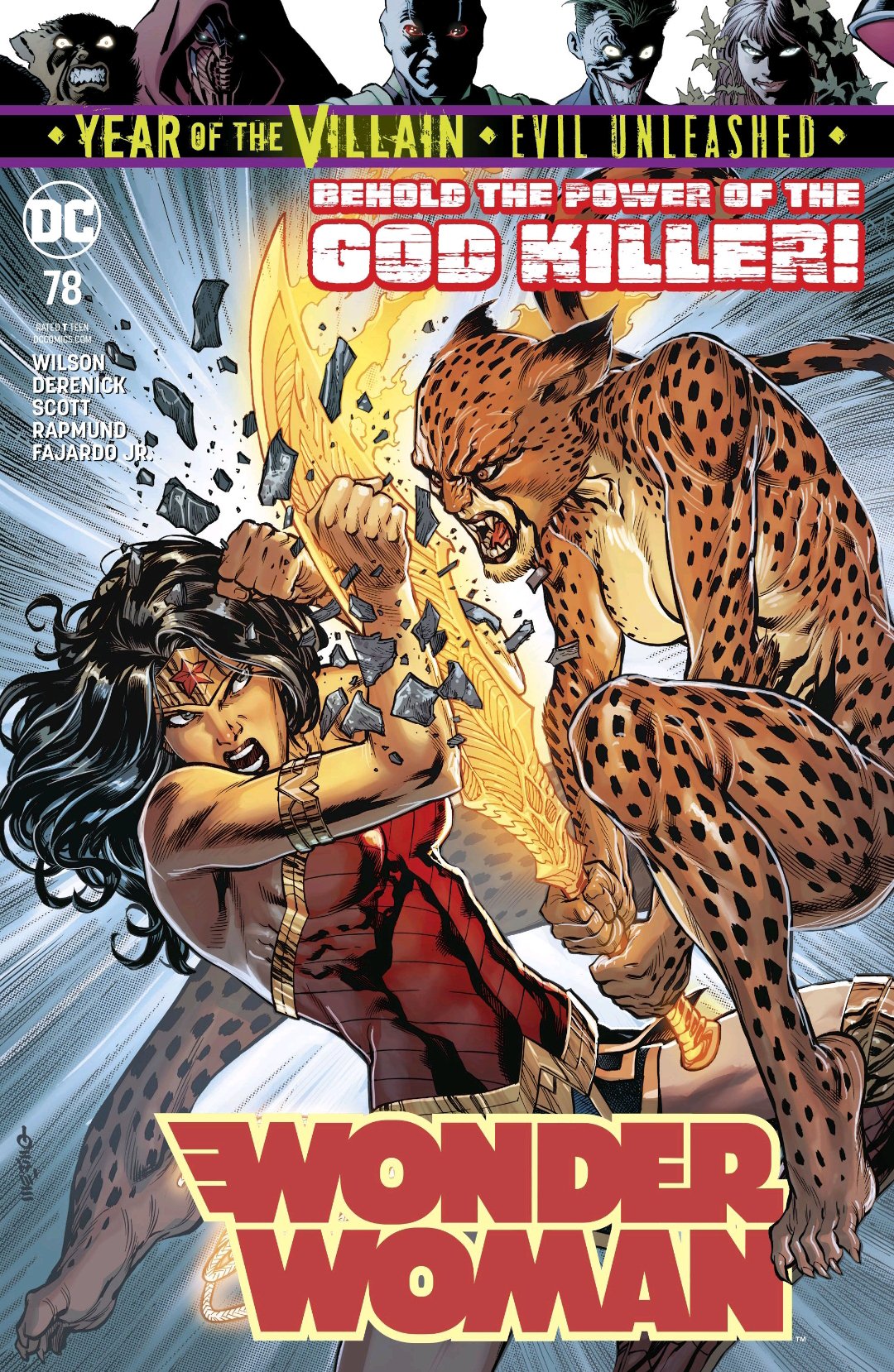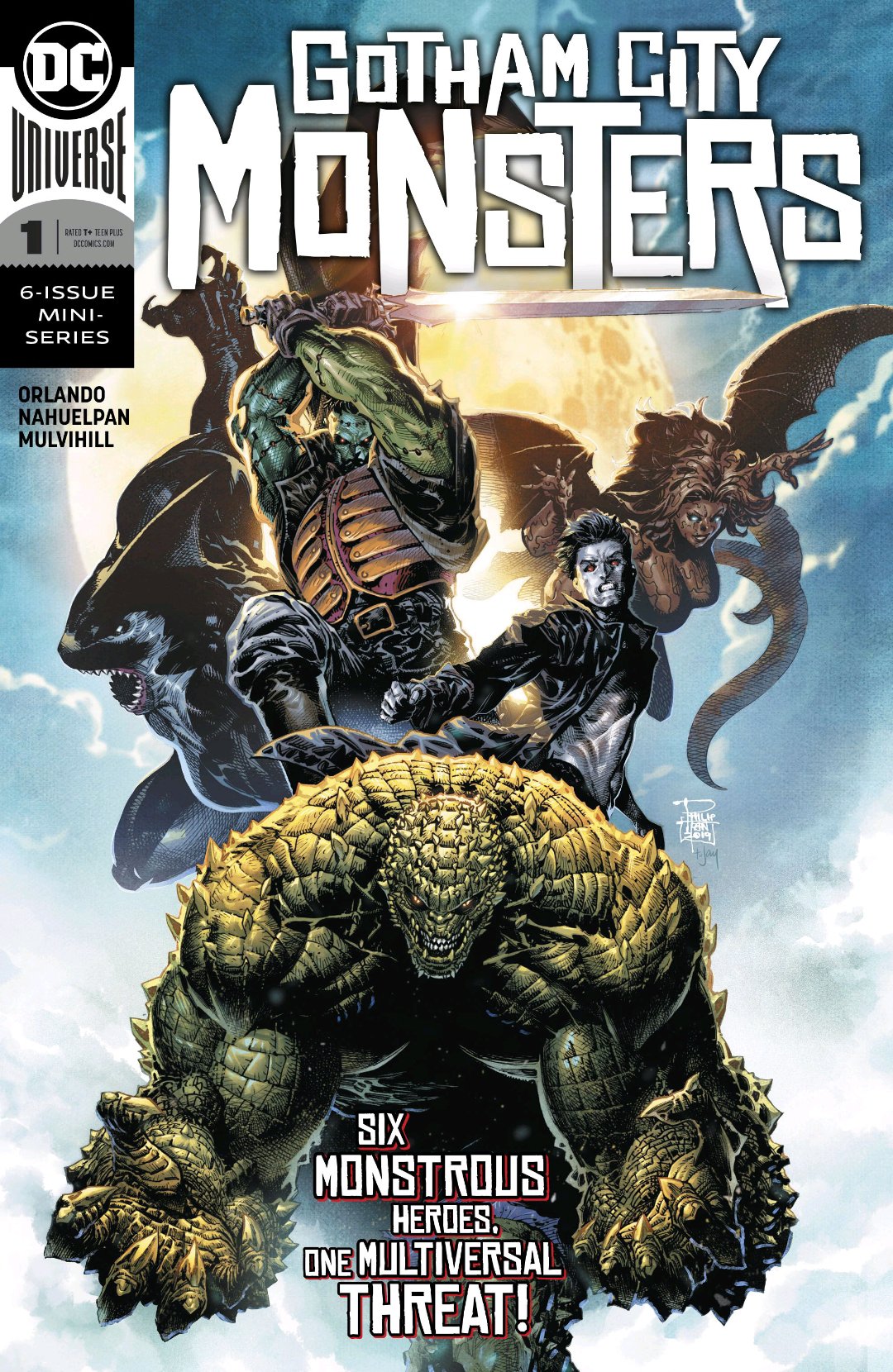Best of this Week: Harleen #1 – Stjepan Šejić and Gabriela Downie

Hindsight is 20/20.
Looking back through the history of Harley Quinn, you’d be a fool to think that she hasn’t taken a strong look back at her life before she became the psychotic Clown Princess of Crime at The Joker’s side. We’ve seen the story told many a time in movies, comics and cartoons, but there’s just something so inviting about the way Šejić presented this absolutely tragic origin story, at least for the first issue. As Harleen describes it, “it felt like one of those cheesy romance novels.”
Harleen separates itself from the other Harley Quinn origin stories by taking that cheesy romance and turning it into a long form car wreck centered entirely around Dr. Quinzel’s point of view and her early interactions with The Joker and the other criminals of Arkham Asylum. If I had to level a complaint at the book, it would have to be that, at least initially, everything is quite flowery and light. To counteract that point, it makes sense for the story to be told in this manner to show the often manipulative nature of abusive relationships like Harley Quinn’s and how ultimately, they don’t end well.
The book opens with Harleen in a dream sequence taking place in a distorted Gotham City. The style here is very reminiscent of Šejić’s work on Death Vigil with dark cityscapes, many shining lights and gothic imagery throughout. Dr. Quinzel walks down a winding road, expecting the same nightmare that she’s had many times before, but there’s something different about this particular dream. Instead of being eaten by an unknown monster, she’s met with the arrival of a bat monster and a pale man with green hair that’s being attacked by him and she chooses to intervene, smiling back at the pale man as he smiles at her. With the narration of this book, it’s easy to assume that this dream sequence takes place a little while after her relationship with the Joker is fully formed as she even acknowledges that smiling back was the biggest mistake of her life.

We get a beautiful page of Joker and Harley dancing and looking happy with each other as Harley’s future transformation occurs in the panels behind them. As beautiful as these shots are, the way that Šejić draws these panels, looking like glass shattering in the background is very telling of what we’re to expect in these future issues. Things transition to a little bit before Harleen meets Joker for the first time as she interviews a veteran who tells her about his “one bad day.” He describes how he and one of his Battle Buddies had each other’s backs until the other guy got his throat slit by a woman in a local bar during their deployment. The veteran describes how he just snapped in that moment and we have something that will be called back to in later pages.
A few years later, Doctor Quinzel presents her interview and findings to a Scientific Symposium in Gotham and it appears to be going badly. She shows her research notes and tells the crowd that the veteran then shot up a hospital full of injured kids and that her research, if implemented, would help decrease the recidivism rate of crime in Gotham by identifying what exactly made them go bad in the first place. She starts to flub her words and get nervous as some in the crowd check their watches, look disinterested or just leave altogether.
Harleen and her friend Shondra go to get drinks and talk about how the good doctor thought she nuked her presentation, they leave separately and it’s almost as if fate was just waiting to kick down the door when an explosion rings out and Harleen faces down the barrel of The Joker’s gun.

This moment is when I fell in love with this book. In a beautiful double page spread, Harleen looks on in abject horror as The Joker aims his gun directly in her face with a wide, toothy grin. The most disturbing part of this is how he’s framed as still being a sexy bad boy. He’s tall, slim with medium length hair and gives off a sickening charm. He’s very distinctly a Sějić Joker and his art style lends well to that.
In an instant, however, he sets the entire tone for how their relationship will be in the future – threatening her life, but pulling back after seeing her face full of cold fear. In the background we see her life flash before her eyes. From her childhood of uncertain career choices, to her adulthood of being attracted to people that she’s not supposed to be, like one of her professors and eventually her current job as a criminal psychologist.
Through this we see exactly what kind of roller coaster her life had been and how, from an early age she just wanted to help people. It’s the very definition of “the road to hell is paved with good intentions” which is one of the central themes of this story.

Joker let’s her go after savoring her fear before he is stopped by the Batman. This action sequence is fairly standard Batman faire, but from Harleen’s point of view it becomes something more. She is absolutely terrified, not just because she almost died, but because she’s found herself interested and immersed in the Joker and Batman’s struggle. Everything in her mind is telling her to run away, but as Batman catches an escaping Joker and pummels the tar out of him, she follows and can’t look away.
She hears the others in the crowd and feels that there’s something wrong. The panels are arranged into a deranged smile of blood as Batman holds Joker by his collar and the sounds of his punches are replaced with the rabid howls of bloodthirst. She feels a bit of sympathy and the agony of post trauma nightmares over the next few days. After coming in to work soon after, one of her bitchy coworkers asks who she slept with to “get it,” and she soon finds out that her research has been funded by the Wayne Foundation as she is met by Lucius Fox.
During their conversation we see more of her own pre-crisis personality come forth. Finding her nervous, insecure and initially unsure as to why she was called into her bosses office in the first place gives us perfect insight as to how the Joker will be able to manipulate her in the manner that he does. She not dumb or naive by any means, but she appears to lack a serious emotional strength. Sejic is good at writing characters like these as seen in his work on Sunstone and Switch and it gives her a good flaw in her personality.

Fox tells her that she’ll soon be transferred to Arkham Asylum to talk to the worst that Gotham has to offer and this last third of the book is rife with on the nose symbolism. As soon as she arrives at Arkham, the shadow behind her morphs from Harleen Quinzel into the form of Harley Quinn and the shadow of Arkham’s ominous gate sign becomes the perspective of someone on the inside looking out.
Within her first few days, she meets people that will be very close to her in the future such as Pamela Isley and Killer Croc to real headcases like Victor Zsasz and The Riddler. She’s also met with the disrespect of having her name mispronounced numerous times by the Arkham staff, outright dismissal of her theories by Dr. Hugo Strange and pushback from Gotham District Attorney, Harvey Dent.
Harvey in particular is most interesting because of his firmness in his ideals. He doesn’t believe there’s any rehabilitation for the residents of Arkham and that they should be sent to Blackgate Penitentiary instead. Harleen is steadfast in her beliefs that there’s more to each of these patients than simple violence and crime. Harvey notes that Arkham has a breakout rate so high that it might as well install a revolving door.
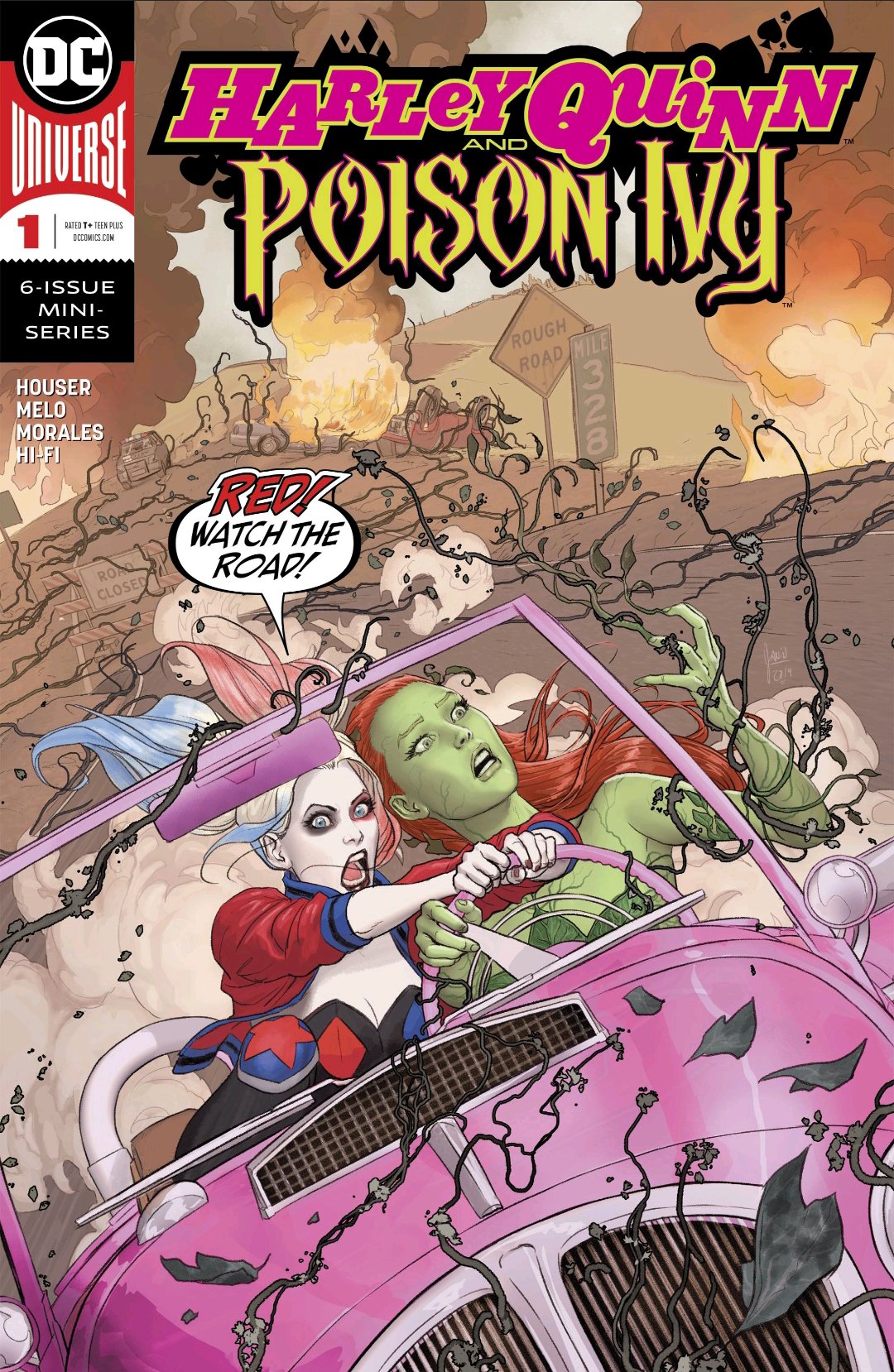
Throughout their argument, half of Harvey’s face is covered in shadow, specifically the half that would later become the deranged side of Dent’s future alter ego, Two Face. This is intriguing because in many ways this meeting feels like a shakedown, a foreshadowing of the man that he would soon become. In one instance he remarks of the beauty of Gotham City and in the next he just flat out tells her what he wants, almost threateningly while rolling his coin over his fingers. His moralizing is betrayed by his furrowed brow and eyes of fury over the sheer thought of Gotham having criminals like Zsasz freed because lawyers blame his mental illness for his horrid actions.
Harleen, infuriated that Dent would ask her to end her research and refuse the Wayne grant so smugly, found herself driven to conduct the one interview that she had been avoiding after going through the likes of Mad Hatter, Killer Croc and The Riddler. The night before her meeting with Harvey, Harleen had gone through all of the Joker’s interview tapes. One thing that stood out to her was Joker’s propensity to retell his “troubled” past in a variety of different ways, Šejić’s own take on the Multiple Choice origin story of the Clown. She felt mildly annoyed by how underwhelming they all were until she found a tape of Joker being arrested and him speaking the way that he did the night that they first met, saying that Gotham is full of civilized monsters and all they needed was a push to send them over the edge.
Just like the veteran in the beginning.
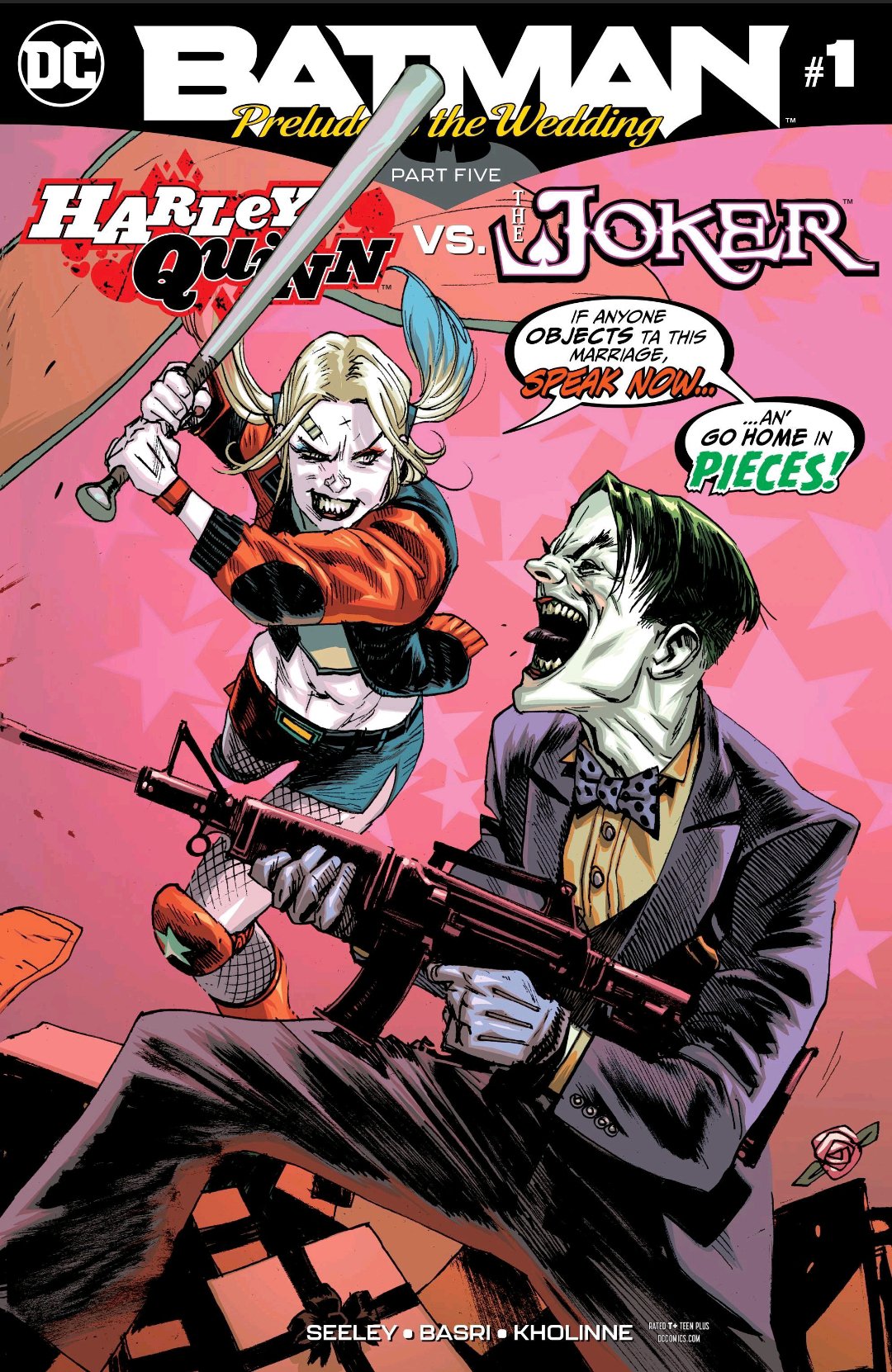
Harley needed a full nights rest to get the courage to interview The Joker and tried a multitude of methods from horse tranquilizers, to a chiropractor, to just simple drinking, but it was Dent that gave her what she needed to go. When Joker and Harleen meet face to face again, he doesn’t recognize her until a sudden SLAM on the glass brings back her look of shock and terror, allowing the Joker to remember her.
With their pleasantries exchanged, he asks her to refer to him as Jay and we jump into the inferno.
Stjepan Šejić is an amazing artist and writer with a knack for writing fun and silly characters. He can also delve into dak territories and themes when he needs to and while this issue is more comedic and funny, it does hide some very dark bits of story underneath. The best way to describe it would have to be…a calm before the storm. Everything in Harleen’s life is at a perfect place. She’s got the dream job that she’s wanted for her research, she’s found very interesting subjects and one in particular that might be the break that she’s been looking for. But we all know what’s on the horizon for her.
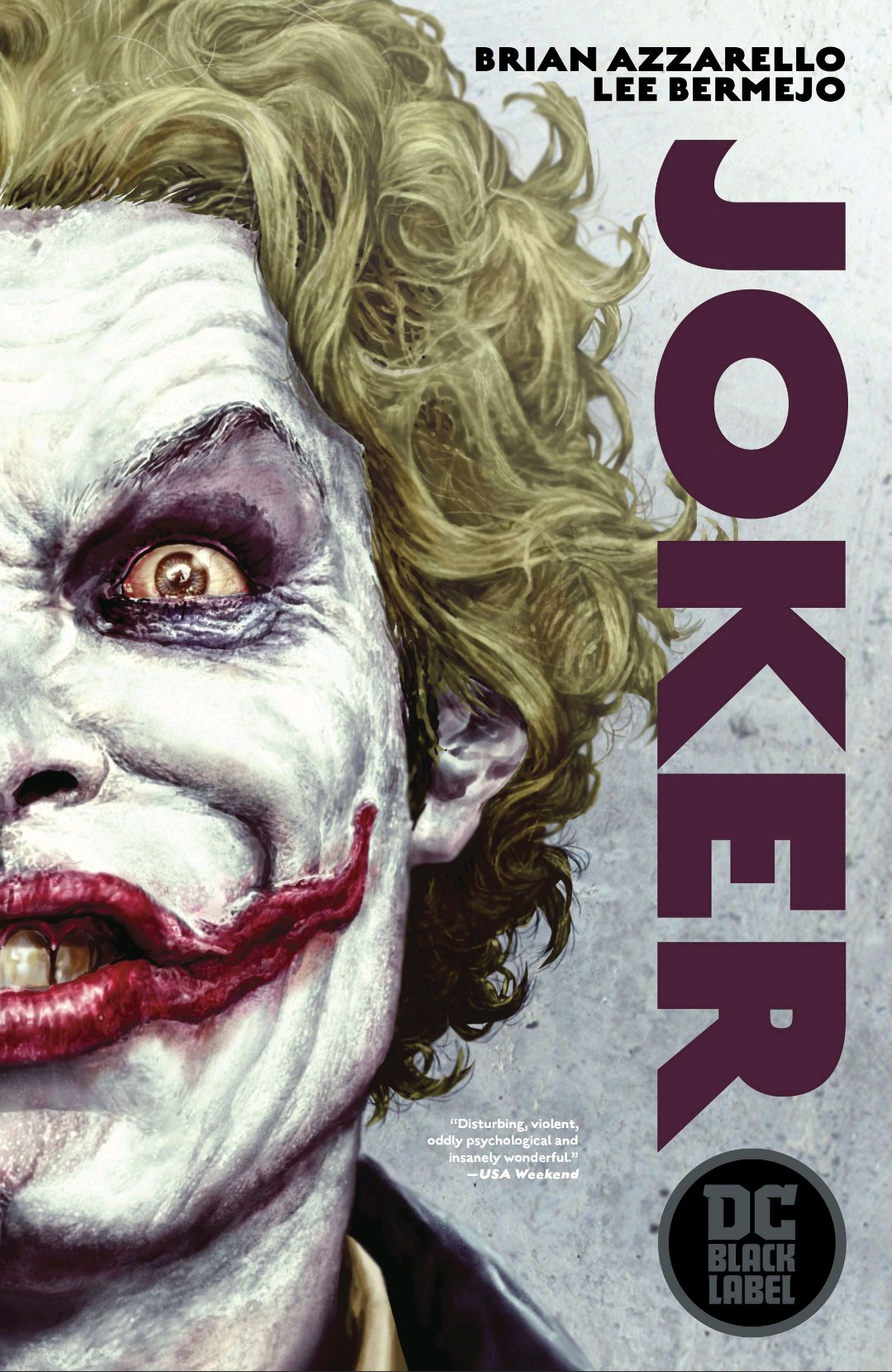
The problem I can see people having with this is the common, “this story is going to glorify the abusive relationship between Joker and Harley!” I don’t see it turning out that way. I think it’s very clear to Dr. Quinzel and the reader that The Joker is wearing a mask. His charm is an ugly façade worn to hide the monster underneath, but she just can’t turn away, especially since he’s been the subject of her dark dreams for a while.
I think that the next issue will show just how the cupcake stage of their relationship with the dark underpinnings slowly transforms her from a reasonable psychologist into a sympathetic beauty that’s found her beast. Šejić only showed us a small part of his writing and art powers and since the second issues of these Black Label books tend to be the best issues, I have no doubt that the next Harleen will be amazing. High recommend
